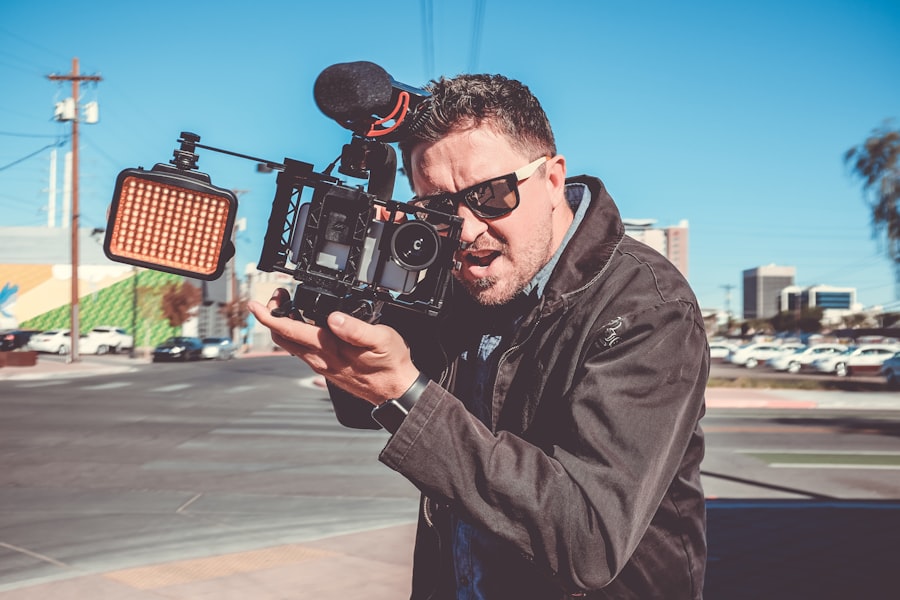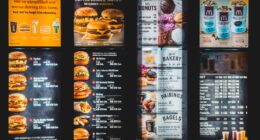In order to effectively promote an artist and their work, it is crucial to first understand their vision and artistic goals. This involves delving into the artist’s background, influences, and the message they aim to convey through their art. By understanding the artist’s vision, a marketing team can tailor their strategies to effectively communicate and promote the artist’s work to the right audience. This may involve conducting interviews with the artist, attending their exhibitions, and immersing themselves in the artist’s creative process. By gaining a deep understanding of the artist’s vision, the marketing team can effectively convey the artist’s unique voice and perspective to the world.
Furthermore, understanding the artist’s vision also involves recognizing the themes and emotions present in their work. Whether the artist’s work is focused on social justice, environmental issues, or personal experiences, it is important for the marketing team to grasp the underlying messages and emotions that the artist seeks to convey. This understanding will inform the marketing strategies, ensuring that the artist’s work is presented in a way that resonates with the audience on a deeper level. By aligning the marketing efforts with the artist’s vision, the team can create a cohesive and authentic narrative that effectively promotes the artist and their work.
Key Takeaways
- Understanding the artist’s vision is crucial for building a successful career in the music industry.
- Building a strong team of professionals who are aligned with the artist’s vision is essential for long-term success.
- Developing a strategic marketing plan that targets the right audience and utilizes various channels is key to reaching a wider fan base.
- Utilizing social media and online platforms effectively can help artists connect with fans and build a strong online presence.
- Creating a unique brand identity that reflects the artist’s personality and values is important for standing out in the industry.
- Building relationships with industry professionals, such as managers, agents, and other artists, can open doors to new opportunities and collaborations.
- Measuring success and adjusting strategies based on feedback and data analysis is crucial for continuous growth and improvement.
Building a Strong Team
Building a strong team is essential for successfully promoting an artist in today’s competitive art world. This involves assembling a diverse group of individuals with expertise in various areas such as marketing, public relations, social media, and event planning. Each team member should bring unique skills and perspectives to the table, allowing for a well-rounded approach to promoting the artist. Additionally, it is important for the team to be passionate about the artist’s work and aligned with their vision, as this will drive their dedication and creativity in developing effective promotional strategies.
Moreover, effective communication and collaboration are key components of a strong team. Regular meetings, brainstorming sessions, and open dialogue are essential for ensuring that everyone is on the same page and working towards common goals. By fostering a positive and collaborative team environment, members can leverage each other’s strengths and expertise to create impactful promotional campaigns for the artist. Building a strong team also involves providing ongoing training and professional development opportunities to ensure that team members are equipped with the latest skills and knowledge in the ever-evolving field of art marketing.
Developing a Strategic Marketing Plan
Developing a strategic marketing plan is crucial for effectively promoting an artist and their work. This involves conducting thorough market research to identify the target audience, understand industry trends, and assess the competitive landscape. By gaining insights into the preferences and behaviors of the target audience, the marketing team can tailor their strategies to effectively reach and engage with potential art enthusiasts and collectors. Additionally, understanding industry trends and competitors’ strategies will inform the development of unique and innovative marketing approaches that set the artist apart in the market.
Furthermore, a strategic marketing plan should encompass a multi-channel approach that leverages various platforms such as social media, traditional media, events, and collaborations. Each channel should be utilized strategically to maximize exposure and engagement with the target audience. Additionally, the plan should outline clear objectives, timelines, and key performance indicators to measure the success of the marketing efforts. By developing a comprehensive marketing plan, the team can ensure that their promotional activities are well-coordinated and aligned with the artist’s vision and goals.
Utilizing Social Media and Online Platforms
“`html
| Platform | Number of Followers | Engagement Rate |
|---|---|---|
| 10,000 | 5% | |
| 15,000 | 8% | |
| 5,000 | 3% |
“`
In today’s digital age, social media and online platforms play a pivotal role in promoting artists and their work to a global audience. Utilizing social media platforms such as Instagram, Facebook, Twitter, and LinkedIn allows artists to showcase their work, engage with followers, and build a strong online presence. The marketing team should develop a content strategy that includes visually compelling images of the artist’s work, behind-the-scenes glimpses into their creative process, and engaging storytelling that resonates with the audience. Additionally, leveraging online platforms such as art marketplaces, artist portfolios, and online galleries can expand the artist’s reach and connect them with potential buyers and collaborators from around the world.
Moreover, social media advertising can be a powerful tool for reaching specific target audiences based on demographics, interests, and behaviors. By strategically investing in targeted advertising campaigns, artists can increase visibility and engagement with potential art enthusiasts and collectors. Furthermore, engaging with influencers and collaborating with other artists or brands on social media can amplify the artist’s reach and foster meaningful connections within the art community. By effectively utilizing social media and online platforms, artists can establish a strong digital presence that enhances their visibility and promotes their work to a global audience.
Creating a Unique Brand Identity
Creating a unique brand identity is essential for artists to differentiate themselves in a crowded market and leave a lasting impression on their audience. This involves developing a cohesive visual identity that reflects the artist’s style, values, and artistic vision. From logo design to color palette and typography, every element of the brand identity should be carefully crafted to convey a distinct personality that resonates with the target audience. Additionally, creating a compelling brand story that communicates the artist’s journey, inspirations, and motivations can further humanize the brand and forge emotional connections with art enthusiasts.
Furthermore, consistency is key in building a strong brand identity. From social media posts to exhibition materials and merchandise, every touchpoint should reflect the artist’s brand identity cohesively. This consistency helps to reinforce brand recognition and build trust with the audience over time. Additionally, creating unique brand experiences through events, collaborations, or interactive content can further solidify the artist’s brand identity in the minds of their audience. By creating a unique brand identity that authentically represents the artist’s vision and resonates with their audience, artists can establish a strong presence in the market and stand out from competitors.
Building Relationships with Industry Professionals

Building relationships with industry professionals such as art critics, curators, gallery owners, and collectors is crucial for artists to gain exposure and recognition within the art world. This involves networking at industry events, participating in art fairs, and engaging in meaningful conversations with key stakeholders in the art community. By building genuine relationships based on mutual respect and shared interests, artists can gain valuable insights, opportunities for collaboration, and access to influential platforms that elevate their visibility.
Moreover, collaborating with industry professionals on exhibitions, publications, or curated events can provide artists with valuable exposure and validation within the art world. Additionally, seeking mentorship from established professionals can offer artists guidance and support in navigating their career paths and making strategic decisions. Building relationships with industry professionals also involves staying informed about industry trends, attending relevant events, and actively participating in conversations about contemporary art. By cultivating meaningful connections within the art community, artists can expand their network, gain valuable opportunities for exposure, and establish themselves as respected figures within the industry.
Measuring Success and Adjusting Strategies
Measuring success is essential for evaluating the effectiveness of promotional strategies and making informed decisions about future marketing efforts. This involves setting clear key performance indicators (KPIs) such as website traffic, social media engagement, exhibition attendance, sales metrics, and press coverage. By regularly tracking these KPIs, artists and their marketing teams can gain insights into what is working well and where there may be opportunities for improvement. Additionally, soliciting feedback from the audience through surveys or focus groups can provide valuable qualitative insights into how the artist’s work is being perceived.
Furthermore, adjusting strategies based on performance data is crucial for optimizing promotional efforts over time. If certain marketing channels are delivering strong results while others are underperforming, it may be necessary to reallocate resources or adjust tactics to better align with audience preferences. Additionally, staying agile in response to changes in market dynamics or audience behaviors is essential for maintaining relevance and maximizing impact. By continuously measuring success and adjusting strategies based on performance data, artists can refine their promotional efforts to achieve greater visibility, engagement, and ultimately success in promoting their work to a wider audience.
In conclusion, effectively promoting an artist requires a deep understanding of their vision, building a strong team with diverse expertise, developing a strategic marketing plan that leverages various channels, utilizing social media and online platforms to reach a global audience, creating a unique brand identity that resonates with art enthusiasts, building relationships with industry professionals for exposure and recognition within the art world, as well as measuring success and adjusting strategies based on performance data. By implementing these strategies thoughtfully and consistently, artists can elevate their visibility in the market and connect with audiences who appreciate their unique artistic voice.
If you’re interested in learning more about music management interview questions, you should check out this article on musicmarketing.digital. This website offers valuable insights into the music industry and provides helpful resources for aspiring music managers. Additionally, you can also read their introductory post here to get a better understanding of their perspective on music management.
FAQs
What is music management?
Music management involves overseeing the business and career aspects of musicians and music groups. This can include booking shows, negotiating contracts, handling marketing and promotion, and managing finances.
What are some common music management interview questions?
Some common music management interview questions may include:
– Can you describe your experience working with musicians or music groups?
– How do you stay organized and manage multiple tasks in a fast-paced music industry?
– How do you handle conflicts or difficult situations with clients or industry professionals?
– Can you provide an example of a successful marketing or promotional campaign you’ve implemented for a musician or music group?
– How do you stay updated on industry trends and changes in the music business?
What skills are important for a music management role?
Important skills for a music management role may include strong communication and negotiation abilities, organizational and time management skills, knowledge of the music industry and current trends, marketing and promotional expertise, and financial management capabilities.
What are some challenges in music management?
Challenges in music management can include dealing with the unpredictable nature of the music industry, managing the diverse needs and personalities of musicians and music groups, navigating complex contracts and negotiations, and staying ahead of the competition in a constantly evolving industry.









